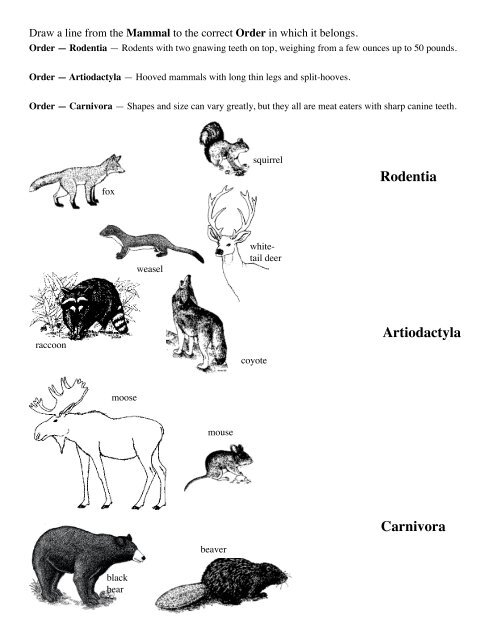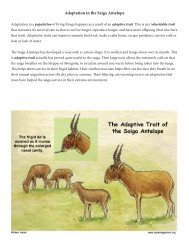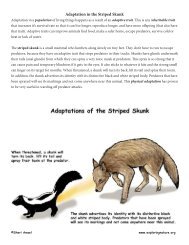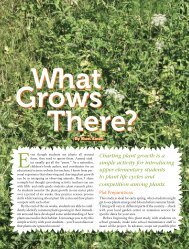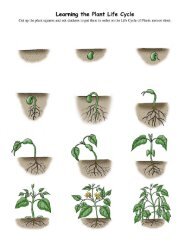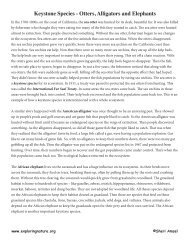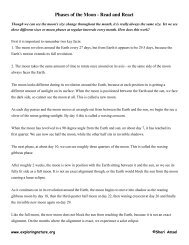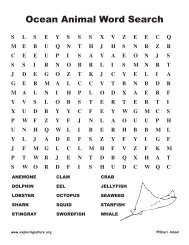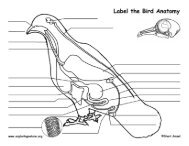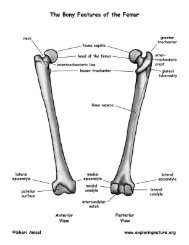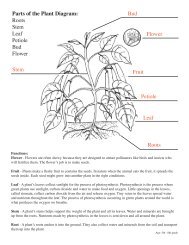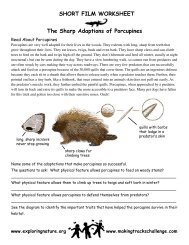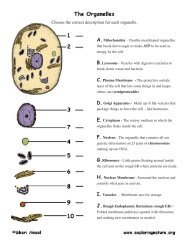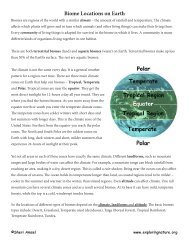Rodentia Artiodactyla Carnivora
Rodentia Artiodactyla Carnivora
Rodentia Artiodactyla Carnivora
Create successful ePaper yourself
Turn your PDF publications into a flip-book with our unique Google optimized e-Paper software.
Draw a line from the Mammal to the correct Order in which it belongs.<br />
Order — <strong>Rodentia</strong> — Rodents with two gnawing teeth on top, weighing from a few ounces up to 50 pounds.<br />
Order — <strong>Artiodactyla</strong> — Hooved mammals with long thin legs and split-hooves.<br />
Order — <strong>Carnivora</strong> — Shapes and size can vary greatly, but they all are meat eaters with sharp canine teeth.<br />
raccoon<br />
fox<br />
moose<br />
black<br />
bear<br />
weasel<br />
mouse<br />
beaver<br />
squirrel<br />
whitetail<br />
deer<br />
coyote<br />
<strong>Rodentia</strong><br />
<strong>Artiodactyla</strong><br />
<strong>Carnivora</strong>
Draw a line from the Carnivore to the correct Family in which it belongs.<br />
Family - Canidae: Canines have a long snout, large, pointed ears and long, bushy tails.<br />
Family - Felidae: Felines have short noses and in profile, short faces. Their ears are smaller and rounder than<br />
canines.<br />
Family - Mustelidae: Mustelids (scent gland family) all have scent glands, but vary widely in their body shape<br />
and form.<br />
Family - Ursidae: Ursids have rounded bodies with small, rounded ears and short tails. They vary in color from<br />
tan to black.<br />
mt lion<br />
weasel<br />
coyote<br />
fox<br />
black<br />
bear<br />
skunk<br />
bobcat<br />
otter<br />
Canidae<br />
Felidae<br />
Mustelidae<br />
Ursidae


